Art Out of the Everyday
vol.2
Portraits with Corks
2016.08
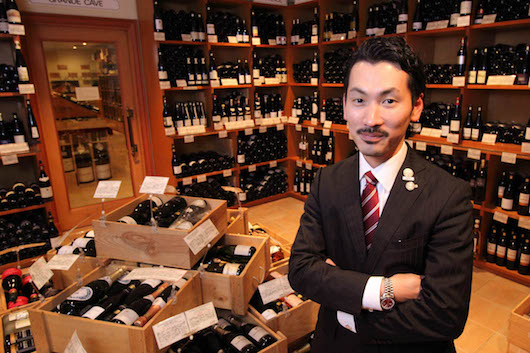
©You Sung Gil
Sommelier Kubo Tomonori works in a store specializing in French wines. When not selling wine, he creates art with wine corks. It is an art, he says, that enriches one's appreciation of wine.
Adding New Value to Memory-laden Corks
I had almost unconsciously brought them home and kept them--the corks from a somewhat special wine ordered to celebrate with friends not seen for a long time or from some other memorable occasion. Corks have the year the wine was made and the name of the winery branded on them. Every single one is different, and so when I look at the corks, I recall the scenes when we opened the bottles.
But if you start collecting corks, you can find yourself at a loss for ways to keep them, and I eventually learned that I am not the only one who finds it really difficult to throw away corks. Wine-loving customers of our shop and some of the restaurants that purchase from us say they have piles of them and no way to use them. After learning that, I began to think of what one could make new with corks.
Portrait of Napoleon
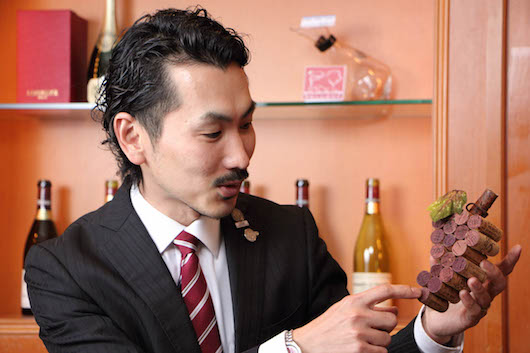
©You Sung Gil
The corks taken from bottles of rose wine, red wine or white wine are firmly dyed with the color of the wine, in various shades like pink, yellow, and purple. Thinking that I could use the different colors of corks to make a kind of pointillist picture, I first collected about 20 red-wine corks, and sticking them together with craft glue to make a "bunch of grapes."
Then I had the idea that maybe I could make portraits with the corks, and if it were some easily recognizable face, I might surprise people a bit. First I consulted a designer friend to find out how big a portrait would have to be to make it seem like a real person's face and what would be the minimum number of colors needed. He calculated that I would need 60 rows up and down and 40 horizontally for a total of 2,400 corks, and if I had 11 different shades, I could theoretically do it.
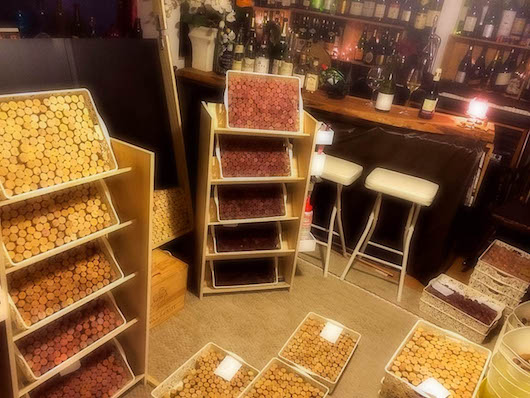
Kubo keeps corks sorted by color in his workroom at home.
Photography courtesy of Kubo Tomonori
Around that time, our French wine shop had planned a dinner gathering on the theme of Napoleon, so I decided to make a portrait of Napoleon. The shop sells wines, but it also plans various regular events in order to encourage people to enjoy wines.
I worked on the portrait after work and on weekends and by sheer trial and error, I managed to complete the Napoleon piece in about six months. When it was displayed on the day of the dinner meeting, as I expected, it was the center of attention.
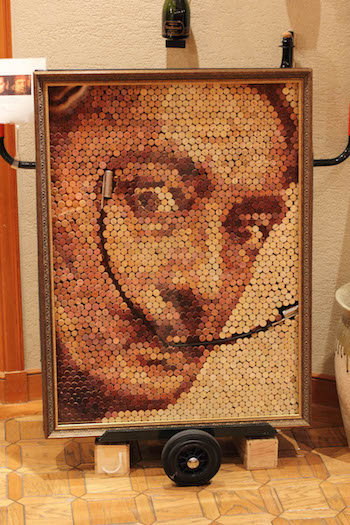
My ninth work depicts Salvador Dali. ©You Sung Gil
Portraits of People Attracted by France
Beginning in 2014, and up until now I have created about 10 works. They include not only French figures but people who were attracted to France like Leonardo da Vinci, Dali, Grace Kelly, and Marc Chagall.
I choose people for the portraits about whom I am curious or have a special interest and before starting, I read books about the person so I will know where they were born and what kind of life they had. With corks, you can't get the effect of many colors as with paints, but if you choose lighter or darker colored corks, the resulting image is quite different. I enjoy gazing at the portrait I use for my model and thinking what kind of person he or she must have been.
Take Maria Callas, for example, who was born in New York and died in Paris, one of the greatest opera singers of all time. Looking at her portraits, you cannot tell whether she is expressing anger or laughter. She may have been happy, or though unhappy, maybe she was forcing herself along; I don't really know, but I really enjoyed thinking about her as I made the portrait.
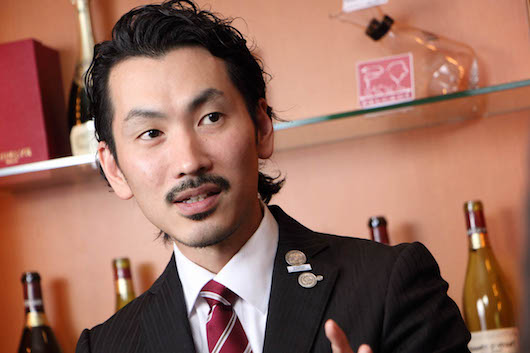
©You Sung Gil
Symbols for Telling About French Culture and History
When I complete a work, we hold a dinner gathering around it. I talk about what I learned about the person and we enjoy food and wine relating to that person with our customers.
For example, at a dinner for a cork portrait of Marc Chagall in April, we prepared a full-course dinner with wine inspired by his painting "Nice Soleil Fleurs." According to people in Nice, there is wine that is closely associated with the sun. I would like people to enjoy French history and culture along with wine. My cork art plays a kind of symbolic role in that.
Wine as a Window on the West
As a boy, wine was like a window on the West. I was brought up in Yamanashi prefecture, which is known for its grapes and wine, and yet I used to dream about French wines. There was something different even about the labels. They depicted scenes from far away, from where the wines had come, of French landscapes, splendid castles, and palaces like Versailles--stone-masonry buildings that had been standing for hundreds of years.
Since I took my job here, I go to France every year to buy wine at the vineyards. When the wine I've purchased arrives at our shop and I offer it to customers, I can see the faces of the people I met who made it in faraway France. I try to bring that sense of connection to our customers.
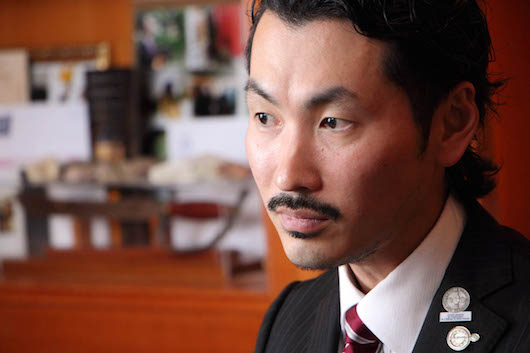
©You Sung Gil
The Fascination Is the Diversity
I have now been a sommelier for 15 years. The kind of information about wines that only a sommelier knew before can now be easily accessed by anyone via the Internet. Even if it is written in a foreign language you can read it using a translating tool. Under the new circumstances the role of a sommelier has greatly changed over the last ten or so years. I myself have begun rethinking what a sommelier should be. For instance, I think it is part of the job of a sommelier to prepare chances for people to enjoy French history and culture along with wines.
One issue that has recently been on my mind is how people in Japan, especially Tokyo, where all kinds of wine from around the world can easily be obtained, tend to judge imported wines only by brand and price. The real fascination of wine, however, is, I believe, in its diversity. Despite weather conditions that vary from year to year, wines are made every year, even with poor quality grapes harvested during years most unfavorable to wine production. In addition, wines change after they pass out of the hands of the wine-makers. Most beverages, once produced, taste the same whenever and wherever you drink them. This is not the case with wine. The taste of wine changes to a characteristic flavor during shipment from Europe half around the globe to Asia, or within the bottle as it further matures. That process represents the flow of time that cannot be shortened no matter how convenient things become.
In the long history of wine, it is relatively recently that the use of corks as the stoppers to preserve wine in glass bottles began. The hunting culture of Europe in ancient times was such that there was no telling what kind of game would be brought home and the ingredients of food were up to what could be found in the bounty of nature. There appeared those who coordinated food ingredients for the day and chose the wine that would match the food; that was the origin of the sommelier, it is said.
Sommeliers have since introduced the wines most suitable to the particular occasion. I like to think of my job as sommelier as showing people how to enjoy wine in a wide variety of ways. We can savor wine with various kinds of food and in diverse situations precisely because there are plentiful kinds of wine.
When French food is made in Japan, local ingredients are used, and so it is a kind of Japanese food. Having this "Japanese food" and French wine together may be seen as international exchange unfolding on the dining table. Another role that the sommelier can play is in conveying that enjoyment.
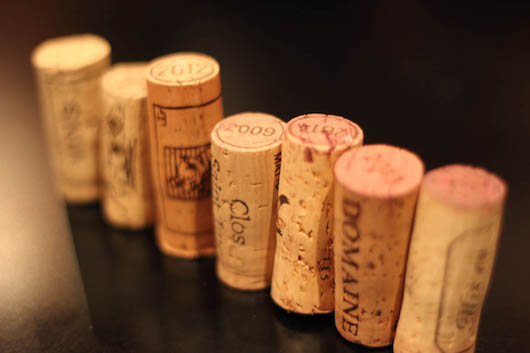
©You Sung Gil
France's and Japan's Symbiosis with Nature
When you think about it, bottles of wine do not have to be sealed with corks. As far as function, the screw caps and glass corks work just as well. And yet Europeans have been using corks for wine for three hundred years.
I think it may be because they like to keep as close to nature as possible. You can see this in French cuisine, which emphasizes environmental balance and not over-hunting fish or game. It also makes use of every part of ingredients--using the bones and skin of fish and animal, for example.
What I thought was interesting when I read about it recently is that Japanese have had this tradition of frugality for a very long time as well, which is now fairly well known as the idea of mottainai. I learned that in the old days people recycled the cotton wadding used in bedding first to make seating cushions and finally for the padding of the thongs of their clogs.
In that spirit, my idea of making art with corks kind of brings together this spirit of frugality and closeness to nature that France and Japan have in common. The fact that I prefer the natural wood and bark feel of corks may be because of my upbringing in the nature-rich environment of Yamanashi prefecture.
The colors of wine that permeate the corks are natural colors, so eventually they fade. The color of the corks of the hair of my first work, of Napoleon, has begun to fade, but I haven't used a color-fixing agent. Just as every wine has a certain age at which it is best appreciated, probably that is true for cork art as well.
So far, the works I have made all feature figures related to France, but eventually I hope to try some on Japanese themes, such as modeled after ukiyo-e paintings. To present such works, I would like to plan some kind of Japan-France interchange events.
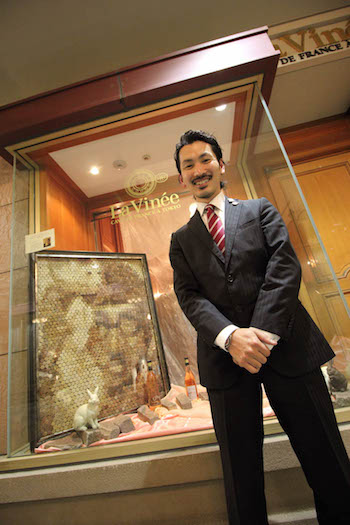
©You Sung Gil
【Interview: April, 2016】
Writer: Yamagishi Hayase












